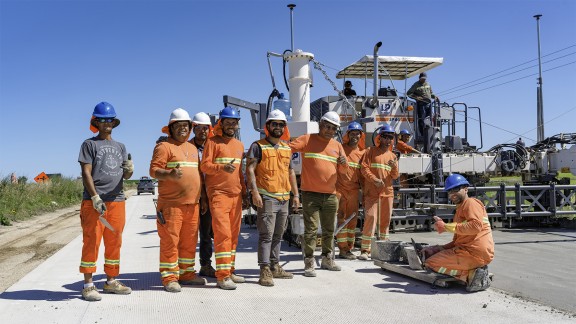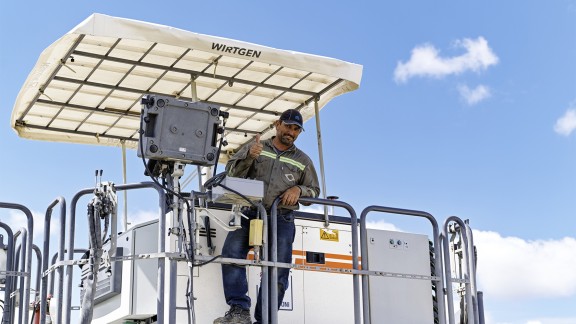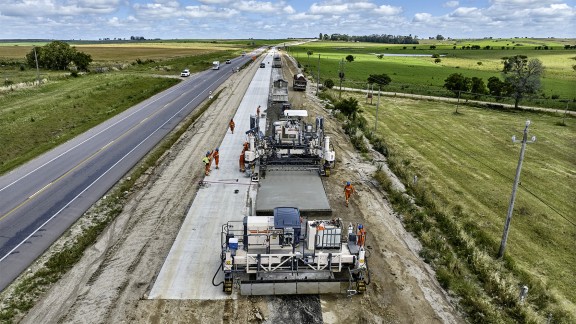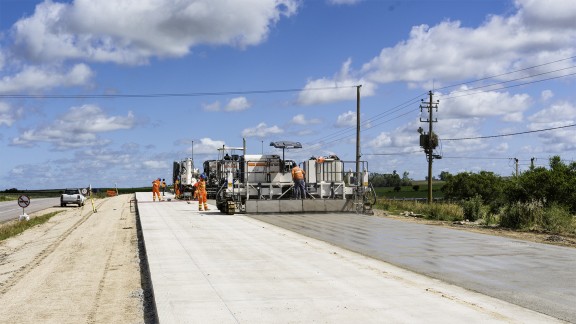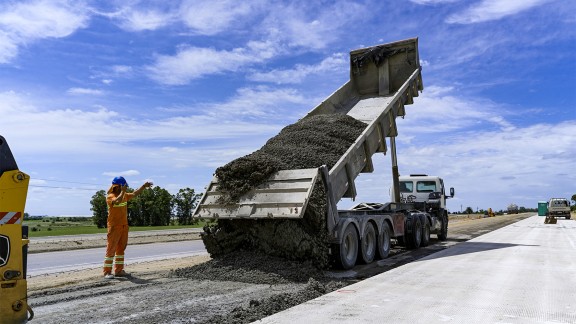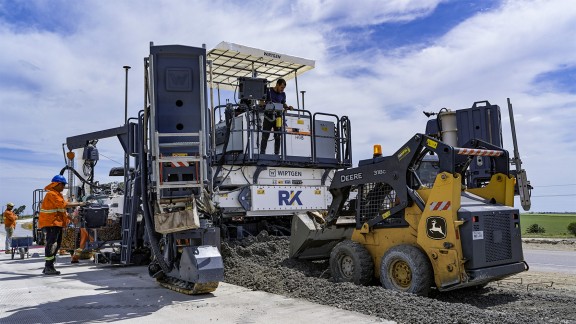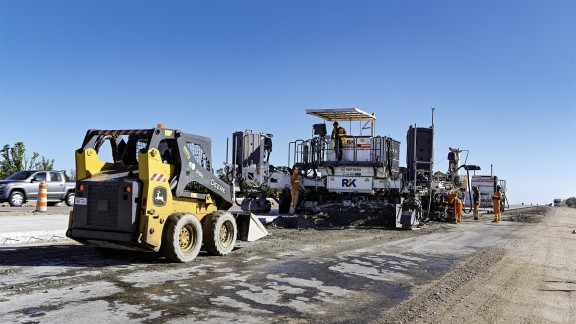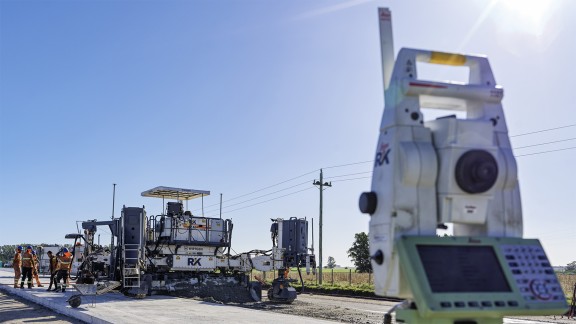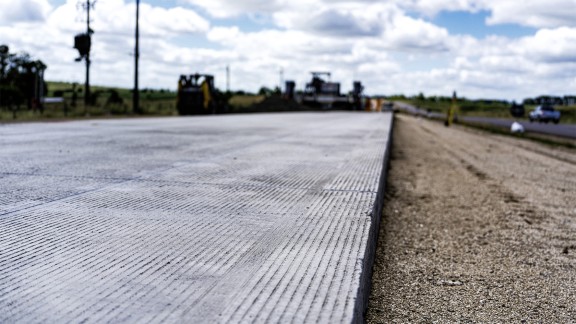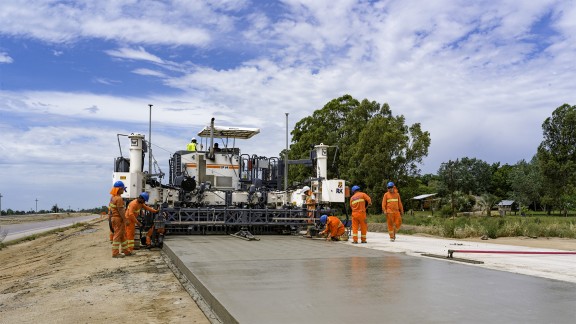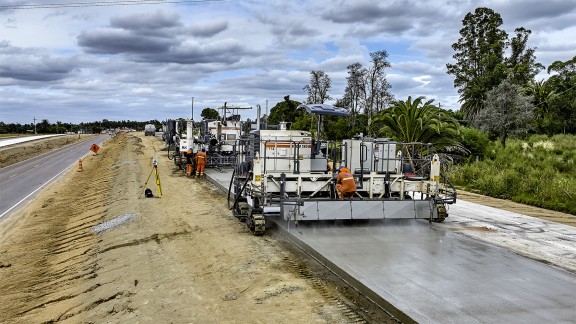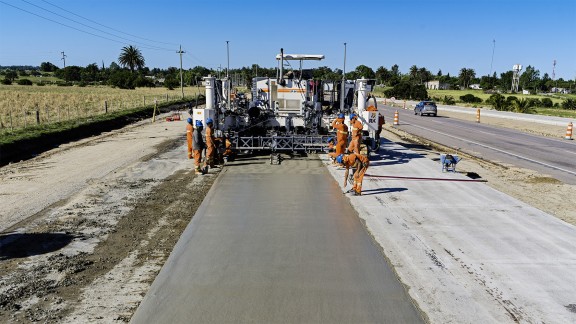The Column of Peace on the Plaza de Cagancha marks kilometer zero for the National Routes of Uruguay. This is also where the five most important highways from Montevideo to the heartland of the nation begin. The “Five Fingers“ link the larger cities to the capital and are the most important arterial routes in the country. One of these is the Ruta 5, which leads north to the city of Rivera on the border with Brazil.
From Montevideo to Rivera
Collaborative Partnership for Widening the Ruta 5 Highway in Uruguay
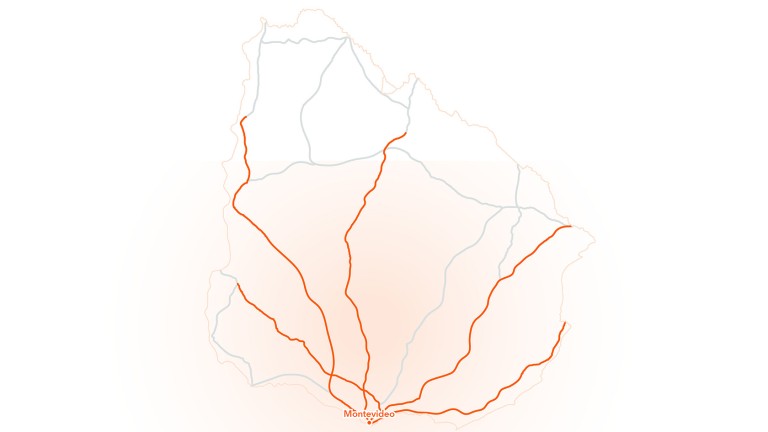
Up to now, there has only been one lane in each direction. but now, the northbound and southbound lanes of a 75 km section of the highway are being doubled to two lanes. The project involves constructing the new lanes and rehabilitating the existing road surface. Four contractors were commissioned to carry out the construction project. The construction crews from INCOCI, R&K – Berkes, L.P. Pietroboni and Stiler worked hand-in-hand on the project on one of Uruguay’s most important highways. The needs of the fleet of three Wirtgen SP 64 slipform pavers, three texture curing machines TCM 180, and a number of other machines from the Wirtgen Group and John Deere were taken care of locally by Interagrovial. All parties involved appreciated the close collaboration.
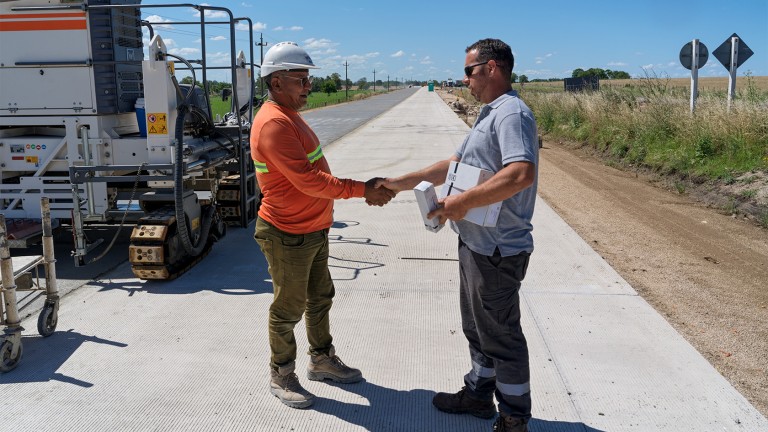
Our ultimate goal is to ensure the long-term success of our customers and partners, and this is why we stand at their side with our efficient solutions and systems at all times.
Wirtgen Group - Close to Our Customers
Optimizing the Paving Process with DBI
When constructing concrete roadways, the reinforcement in the form of dowel baskets or steel rebar mats is frequently pre-placed ahead of the machine. The pre-placement process considerably limits the space available on the construction site and hinders the maneuvering of construction vehicles on the site. When reinforcement is in place, this means that the concrete supplied for the paving work can only be delivered from the side.

“Normally, the steel reinforcement is pre-placed on the area to be paved, which would be a very laborious business on the site we have here.”
Eugenio Plottier, Incoci
In this case, the use of the integrated dowel bar inserter (DBI) on the SP 64 brings numerous advantages. Both the dowel bars and the longitudinal tie bars are placed automatically across the entire paving width. The concrete can be offloaded and evenly spread immediately in front of the machine. Construction vehicles such as the tipper trucks supplying the concrete have more space to maneuver. This increases process reliability, as the dowels and tie-bars can always be inserted at exactly the right locations.

“With this machine, we can achieve a much higher overall level of productivity than with our earlier method of paving the concrete with vibrating screeds.”
Sebastián Trujillo, R&K - Berkes
More room to move on the construction site
Traditionally, slipform pavers are controlled by mechanical scanning of previously installed stringlines. In contrast to this, when using a virtual stringline for 3D control, the height and positioning data for the line to be paved are contained in a digital terrain model. Two prisms are typically installed on the slipform paver, both of which have line-of-sight contact with a total station and reflect its laser beam. The total station determines the position of the prism in three dimensions and transmits it to the machine’s control system. In combination with the inclination sensors on the machine, this enables extremely high precision control of the paver’s height and position.
In comparison to control by a physical stringline, the virtual stringline offers a number of benefits: The paving crew on the Ruta 5 highway was able to move freely around the construction site, and there was more room to maneuver the machines and vehicles. What’s more, the drivers of the tipper trucks delivering the concrete didn’t need to think about a stringline being in the way. They were able to drive right up to the slipform paver to offload the concrete anywhere on the site. The time consuming detours to avoid the stringline when leaving the site were also no longer necessary. Apart from the better site logistics, the project managers also made a special mention of the outstanding IRI they were able to achieve with the system. The International Roughness Index (IRI) describes the evenness of the road surface.
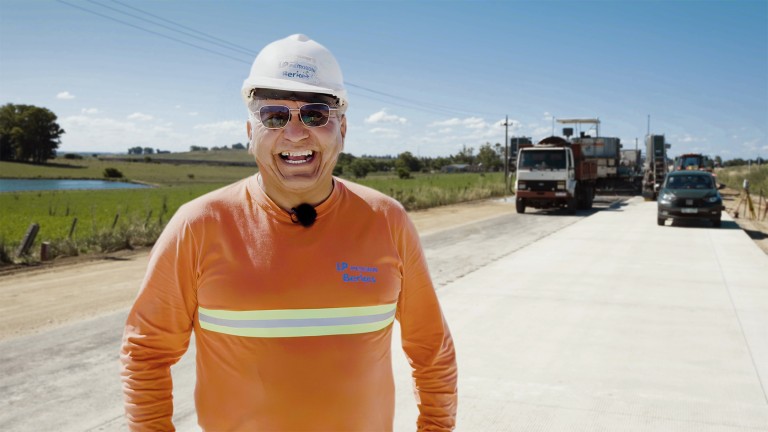
“This makes it easier to operate the machines according to the plans, and the work is easier because there’s more room on the site. We’ve also had positive experiences with the 3D system when it comes to the IRI.”
Jahuer Flores, Berkes-Pietroboni
Project Brief
Widening of the existing road from one lane in each direction to two. Construction of the new lanes and the rehabilitation of the existing road surface.
- Wirtgen:
- 3x SP 64 with DBI and STBI
-
- 2x TCM 180
- John Deere:
- JD 318G
- Overall distance:
- 75 km
- Section 1: Peaje Mendoza – City of Florida
- 30 km
- Section 2: City of Florida - Sarandí Grande
- 45 km
- Overall paving width:
- 15.6 m
- Paving width per lane:
- 3.9 to 5 m
- Paving height:
- 220 mm
- Insertion of steel reinforcement integrated on the machine
-
Dowels and tie-bars
Press/media kit
Click here to download a ZIP file containing the press release in the available languages in Microsoft Word format and the images in 300 dpi resolution.
Download